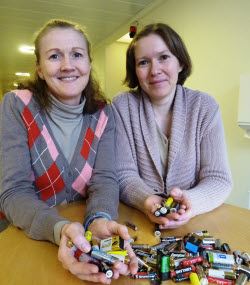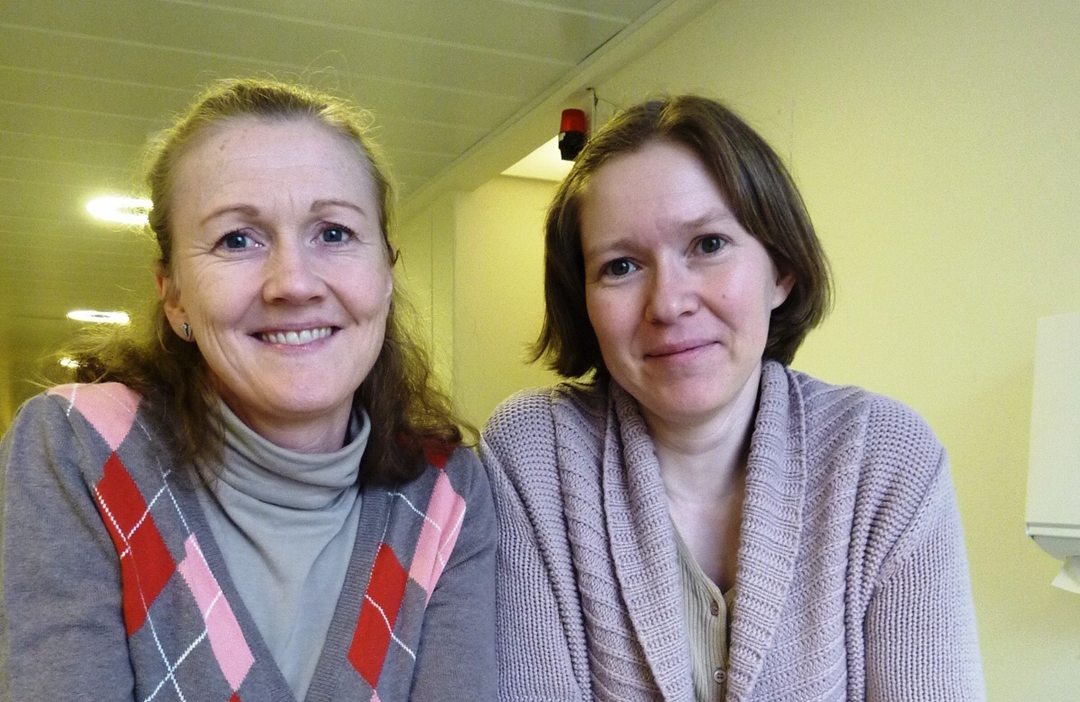On the Gløshaugen Campus in Trondheim, a handful of young scientists are working at full tilt on batteries. They come from both NTNU and SINTEF, and they have increased their level of activity in the Materials and Chemistry Gemini Centre since 2008. Three PhD students are working closely with the enthusiastic research group, and another will be recruited in the coming autumn.
Care for the environment is in focus. The research group tries to use environmentally friendly methods in the manufacture of its batteries, using water instead of organic solvents, and is focussing on developing methods that can easily be scaled up for industrial production.
This is a world-wide area of research, and we may ask ourselves: “How can little Norway contribute here? But in fact, we are right at the leading edge of research in innovative thinking and developing new concepts,” says Anita Fossdal. “Today’s research topics may turn up in the batteries we will be using in ten years.”

Improvements needed
The general problem of battery life is well-known, and mobile phones with run-down batteries are an everyday experience. Both at work and at home it is essential to have a charger within reach in order not to lose contact with the rest of the world. Of course, it doesn’t help that we are continually downloading new apps that draw more and more current, or that we are surrounding ourselves with more and more devices running on rechargeable batteries.
All this means that there is a crying need for batteries with sufficient capacity, and both new materials and improvements to existing technology are much in demand.
Alternatives
The main activity of the “battery gang” at SINTEF/NTNU is on lithium-ion batteries, which are the most common type in current use, since they are light and have high capacity. This type of battery is used in all portable applications today, and we find them also in workshop tools and hearing aids. Li-ion batteries also dominate the electric and hybrid vehicle scene.
“Lithium-ion batteries are well established all over the world,” says Fride Vullum-Bruer. “The problem is that the supply of raw materials is beginning to dry up. With current battery technology, there are simply not enough reserves of lithium available to replace all our petrol- and diesel-driven cars with battery-driven vehicles. This means that we have to look for alternative solutions.”
The research group is therefore also working on the development of magnesium-ion batteries; while this technology is not a substitute for current li-ion batteries, it can complement them and has a great deal of potential in certain niche applications. The group has already sent an application to the Research Council of Norway for funding to follow up these efforts. Their most creative idea is to fabricate rechargeable Mg-ion batteries using olivine, a mineral that can literally be “dug out of the earth”. This mineral consists of magnesium, iron, silicon and oxygen, and the research group has applied for funding for a new project to develop batteries in which olivine will be an important component.
“Among other aspects, we want to find out whether we can obtain similar results by using natural olivine in place of a material that we have produced in the laboratory. These efforts are based on our own previous research on materials whose structure and composition are very similar, but which contain lithium instead of magnesium,” says Fride Vullum-Bruer.
Better conductivity
The scientists themselves believe that they have made most progress in developing cathode materials and producing nanostructured cathodes. Here they are collaborating with Uppsala University, which has one of the best research groups in the world in this field.
All batteries are of fairly similar construction, being made up of a cathode and an anode separated by an electrolyte. A characteristic of all known cathode materials is that they are poor conductors of both electrons and ions.
“Many of these materials consist of such large particles that the lithium ion can only penetrate the external layer of each particle when we want to charge the battery rapidly. What we are trying to do now is to replace this structure with smaller particles (20 – 30 nanometres in diameter) in order to exploit the entire volume. We are also testing whether it will be possible to give the particles a nanometre-thin coating of carbon that would give us better electron transport,” says Anita Fossdal.
Temperature also affects battery conductivity and lifetime. At high temperatures, the lithium ions easily pass through the electrolyte between the anode and the cathode; such transport is essential if the battery is to deliver current. As the temperature falls, the properties of the electrolyte change, as we experience in everyday life when our mobile phone battery quickly goes flat in the cold when we are skiing. The scientists are therefore trying to find ways to get the batteries to function at low temperatures, for example by means of incorporating additives in the electrolyte.
“We are gaining completely new understanding of the importance of the structure of the materials used in batteries and of how we can control this through the “recipe” for these materials. We now know that simple procedures such as changing the holding time and temperature during heat treatment enable us to customise the properties of the material as we prefer. We can already see significant improvements in battery characteristics as a result of the methods we are employing,” say Fossdal and Vullum-Bruer, who are optimistic about the future of their research.

